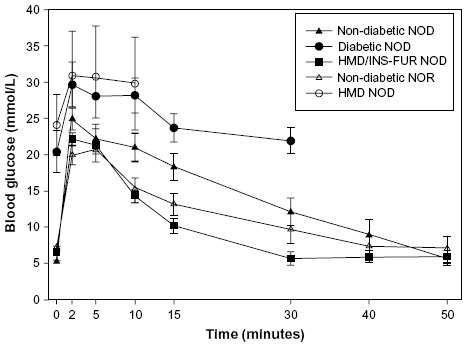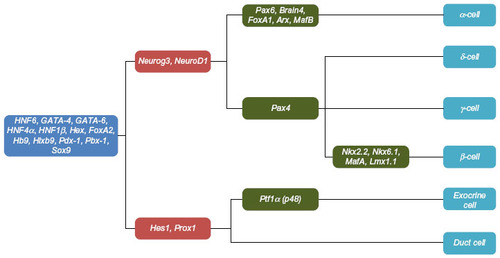Figures & data
Table 1 Animal models of T1D
Table 2 Insulin used for the reversal of T1D in animal models
Figure 1 Plasma glucose levels following an IVGTT in NOD mice treated with INS-FUR in a lentiviral vector (HMD).
Abbreviations: IVGTT, intravenous glucose tolerance test; INS-FUR, furin-cleavable insulin; HMD, human immunodeficiency virus, murine stem cell lentiviral vector; NOD, nonobese diabetic; NOR, nonobese resistant; SEM, standard error of mean.

Figure 2 β-cell transcription factor hierarchy.

Table 3 β-cell transcription factors used for the reversal of T1D in animal models
